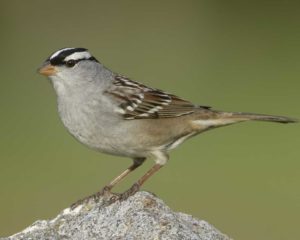Springtime Birds and Bugs
By Glen Wunderlich
Our recent warming period has brought with it some perennial inhabitants that can torment any person full of springtime exuberance: black flies. Typically seen during the month of April, these annoying pests emerged a bit behind schedule and are with us now. They will buzz about one’s face and upper body where females seek a meal of blood for egg development. There’s little that can be done to eliminate them, but head nets without eye holes work great. Long-sleeve shirts and DEET insecticide can also provide protection. But, these pesky critters will find a way to skin through small openings, so beware.
The bites of black flies cause different reactions in humans, ranging from a small puncture wound, where the original blood meal was taken, to a swelling that can be the size of a golf ball. “Black fly fever” can result and include symptoms of headache, nausea, fever, and swollen lymph nodes in the neck.
On a lighter note, Michigan’s migratory birds are showing up in waves of warm air. Most recently, white-crowned sparrows
have found one of my feeding sites, where seed is spread in the straw of white pines. The tiny migrants wouldn’t stand a chance competing with bullies such a common grackles and red-winged blackbirds at a typical feeder, but given some space, will forage right along with others. With northern ranges of Alaska, Manitoba and east to Labrador and Newfoundland, they’ll be here just long enough to stock up on nutrition before the next leg of their arduous journey.
Another sparrow variety seen within the past few weeks has been the fox sparrow. Larger than our house sparrows, they are boldly striped with a rich rufous markings including a bright tail. They are well-suited for scratching in the pine straw and can be singled out from similar birds by their foraging technique alone.
Technology has advanced to the point that the Cornell Lab of Ornithology has developed a website called BirdCast,” said Michigan bird conservation coordinator Caleb Putnam. “The site gives you real-time information about the bird migration that’s occurring in your backyard. It’s a great tool for planning your birding trips.”
Using the U.S. NEXRAD weather surveillance radar network, BirdCast can detect large concentrations of migrating birds by sensing the water in the birds’ bodies. Because many birds migrate at night, checking the radar at night is a good time to see if birds are headed your way.
The Cornell Laboratory of Birds “All About Birds” website is a great source for bird identification tips and song samples.
Birding doesn’t necessarily require a lot of equipment, but good binoculars – and not the compact models – can make identification more likely. Of course, a field guide small enough to tote is helpful, too. Smart phones or cameras can be used to capture images and with today’s technology, can be used to magnify details, thus making for more enjoyable ventures afield.







